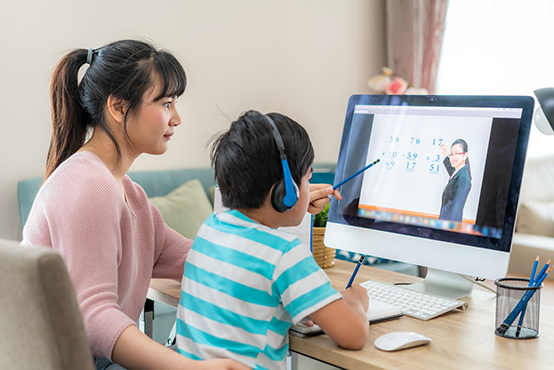With the pandemic still trying to dominate our lives, many schools have opted to go with full online learning for the 2020-2021 school year.

The teacher's role is new. Whereas in previous years, teachers have moved away from lecture format, use of pre-recordings is now increasing. Zoom and other video chat programs are become the dominant mode of direct instruction. Figuring how to engage students and realistically assess their learning is a new level of challenge.
Every grade is different and every household is unique, so the experience will be different for different families. Many households also have children at multiple grade levels. Coordinating it all can be a genuine challenge. The evolving role of the parent is critical here. No longer are you simply mother, father or grandparent, but you are also now a co-teacher.
Distance or Online Learning is a FUNDAMENTAL SHIFT in how we educate students. However, certain core principles of effective teaching remain true.
Pedagogy: The science of teaching

There are do's and don'ts for teaching. There are certainly effective and less effective way of designing lessons.
For example. Use this tried-and-true sequence for teaching any new concept or procedure:
- I do (teacher demonstrates)
- We do (whole class goes through the process)
- You do (student practices on their own)
Teach in context:
- If you are teaching vocabulary, go beyond definitions. Use words in whole sentences.
- Use pictures, videos and examples to enrich any idea.
- Connect content in one lesson to what has been learned in other lessons. Enrich and extend learning.
Construct knowledge. Have students collaborate with each other. Use think-pair-share:
- Think: Ask a question. Each student thinks privately.
- Pair: Each students works with a learning partner (face to face or virtually).
- Share: Student one listens to student 2 give an answer. Student 2 actively listens and reports back what he/she heard. Then flip the process.

Engagement
Stay connected. Don't talk or lecture all the time. Let students talk, write or create for a majority of the lesson time. Connect, check in often, create a space where they can be social and collaborate with other classmates, even if it is online. Finally, mix it up. Don't solely rely on one type of activity. That will keep it more interesting.
Assessment
Do formative assessment. That means the periodic and regular process of seeing whether students are "getting it." The process is intentional, yet informal. Check for understanding frequently, and give timely feedback. Note that teachers are not the only source of feedback. Other students can and should critique each other, share with each other. There are many new apps for sharing: from collaboratively developed Google Slides, to Seesaw, to Flipgrid, and more.
Infrastructure and Support at Home
Do you have separate space for study? Is it quiet and free of distraction? How fast and reliable is your wireless Internet connection? Does your student have a dedicated device such as a laptop, Chromebook or iPad? Does everyone know how to use Zoom and the multiple apps your school uses?
Many of these questions probably evoke laughter. You likely don't have an I.T. Department in your house, but you still need someone to help answer technical questions. As long as you can connect to the Internet, you have a fair chance at making this work. Most teachers use something like Google Classroom in combination with Zoom to make this all work.
Summary
Online learning is partnership between students, teacher and parent. We have discussed three core principles of teaching and learning: pedagogy, engagement and assessment. Learning becomes more successful when lessons and objectives are clear.
Quick Links
- Resources that support Distance Learning
by California Dept of Education - Best Tools for Virtual and Distance Learning
by Common Sense Education - PBS Learning Media
Free standards-aligned videos, lessons, more - Tips for Designing Online Lessons
- 9 ways to use Flipgrid in (or outside) Classroom
- Use Seesaw to share learning
- Google Tools to Support Online Learning
- How Teachers Can Navigate School Closures
- Common Sense Education - Resources for families
- Preparing for jobs of the future